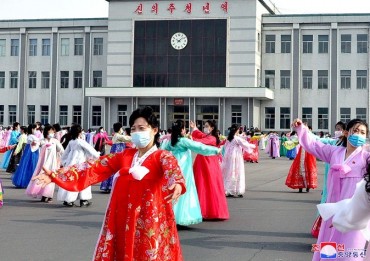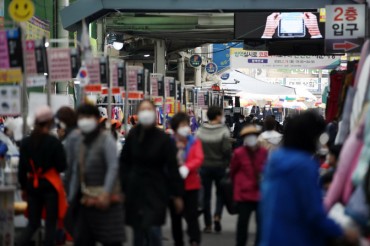
This image provided by Yonhap News TV shows single-member households (L and R) and a married couple (C).
SEOUL, Dec. 8 (Korea Bizwire) — The proportion of one-person households in South Korea hit a fresh record high last year as the number of such households has continued to increase amid a delay in marriage and rapid aging, data showed Wednesday.
One-person families accounted for 31.7 percent of the total last year, up from 30.2 percent the previous year, according to the data from Statistics Korea.
Households consisting of a single member totaled 6.64 million in 2020, up from 6.15 million a year earlier, the statistics agency said.
The proportion of one-person households has continued to rise since 2015, when the percentage of such households hit 27.2 percent. In 2019, the percentage topped 30 percent for the first time.
The data came in line with the country’s demographic changes.
More young South Koreans are delaying or giving up on marriages due to economic difficulties and changes in social norms, resulting in the already-low birth rate dropping.
The country is also undergoing rapid aging with the expectation that it will become a super-aged society in 2025, in which the proportion of those aged 65 and older will hit 20 percent of the total population.
Of the single-member households, people in their 20s accounted for the largest proportion of 19.1 percent last year. It was followed by people in their 30s with 16.8 percent and those in their 50s with 15.6 percent, the data showed.
By gender, women aged 60 and older living alone had the largest share of 45.1 percent. But in the case of men, 56.9 percent were aged between 30s and 50s.
As for reasons for living alone, 24.4 percent picked study and work, followed by death of a spouse with 23.4 percent. The data showed 16.2 percent said they voluntarily chose to live alone as they wanted to do so.
The proportion of single-member households that consist of working people fell below 60 percent last year, the data showed.
As of October 2020, the number of such households came to 3.7 million, accounting for 59.6 percent of all one-person households. The 2020 figure was down from 60.8 percent in 2019.
Of the people in their 30s living alone, the number of working people came to 816,000 last year, down 14,000 from the previous year amid the pandemic.
Yearly income earned by one-person households amounted to 21.6 million won (US$18,400) as of 2019. This compared with average earnings of 59.2 million won by all households. Eight in 10 single-member households earned less than 30 million won per year.
One-person households held an average of 176 million won in assets as of end-2020. Their financial debt averaged 25 million won, the data showed.
Half of single-member households were living in a house of 12.1 pyong or less last year. One pyong is equivalent to 3.3 square meters.
(Yonhap)






